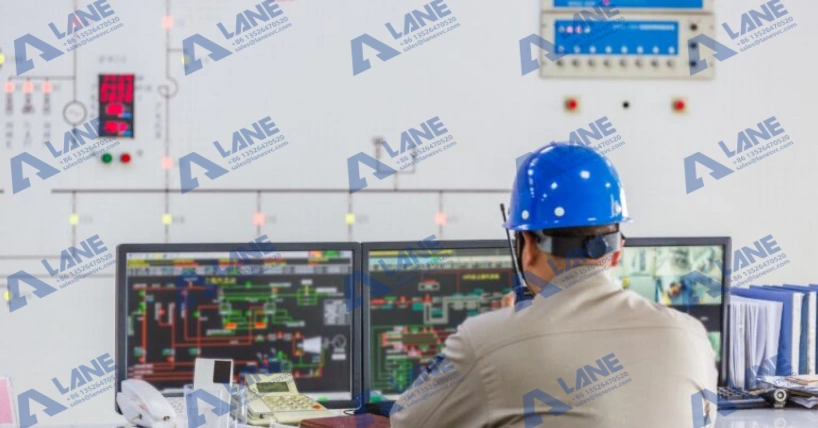Release time:2025-10-21 popularity:407
In industrial sectors such as chemical manufacturing, pharmaceuticals, and fertilizer production, reactors play a vital role in carrying out controlled chemical reactions. A Reactor Maintenance Guide helps ensure equipment reliability, minimize downtime, and protect investments in high-value systems. Proper reactor maintenance not only improves efficiency but also safeguards plant safety and product quality. This Reactor Maintenance Guide provides manufacturers and plant operators with practical insights into common issues and effective solutions for maintaining reactor performance.
Even the most durable industrial reactors face wear and performance challenges over time. Understanding common maintenance issues is the first step in building a preventive maintenance plan under this Reactor Maintenance Guide.
1.Corrosion and Material Degradation
One of the most frequent challenges in reactor maintenance is corrosion. Continuous exposure to acids, alkalis, and high-temperature reactions can degrade reactor walls and internal components. Corrosion not only shortens equipment lifespan but also risks contaminating products. Solution: Use corrosion-resistant materials such as stainless steel, glass-lined coatings, or PTFE linings. Regular inspections and early corrosion detection are essential elements of an effective Reactor Maintenance Guide to prevent costly failures.
2.Seal and Gasket Failures
Reactor seals and gaskets are prone to wear over time, which can lead to leaks of hazardous chemicals or loss of pressure. Leaks reduce process efficiency and pose safety risks to workers. Solution: The Reactor Maintenance Guide recommends using high-grade sealing materials such as graphite or fluor rubber. Implement routine inspections and replace seals proactively to maintain pressure stability.
3.Inconsistent Mixing or Agitation Problems
Reactor performance depends heavily on proper mixing. Worn-out agitator blades, shaft misalignment, or uneven motor speeds can result in inconsistent chemical reactions. Poor mixing can lead to incomplete reactions, low product quality, and energy inefficiencies. Solution: Maintain agitators and bearings regularly and calibrate motors for consistent rotation speeds. Advanced plants can utilize PLC-controlled variable-speed drives to optimize agitation and reduce human error.
4.Temperature and Pressure Fluctuations
Reactors often operate under strict temperature and pressure requirements. Faulty sensors, heat exchanger inefficiencies, or boiler malfunctions can cause fluctuations, impacting product consistency and increasing safety risks. Solution: Integrate automated temperature and pressure monitoring systems with alarms for deviations. Use PLCs to control heating and cooling systems in real-time and include safety relief valves to prevent overpressure conditions.
5.Build-Up and Fouling
Residues from chemical reactions can accumulate on reactor walls, impellers, or pipelines, reducing efficiency and contaminating products. Solution: Implement Cleaning-in-Place (CIP) procedures regularly. Choose materials and coatings that resist fouling and make cleaning easier, reducing downtime and maintenance labor.
A successful Reactor Maintenance Guide emphasizes preventive, predictive, and corrective maintenance approaches.
Scheduled Preventive Maintenance: Establish daily, weekly, and quarterly inspection routines covering seals, gaskets, sensors, agitators, and corrosion-prone areas.
Predictive Maintenance: Use real-time monitoring data to predict potential failures before they occur. Vibration analysis, thermal imaging, and sensor feedback can prevent unplanned shutdowns.
Documentation and Checklists: Maintain detailed logs of inspections, repairs, and component replacements. A documented maintenance routine ensures consistent practice across teams.
Training and Safety Protocols: Ensure operators are trained in standard operating procedures (SOPs) and safety protocols, including handling of hazardous chemicals.
By combining preventive, predictive, and corrective maintenance, plants can significantly reduce operational risks and extend the useful life of reactors.

An effective reactor maintenance schedule depends on the reactor type, chemical medium, and operating conditions. It should include daily checks of pressure, temperature, and seals; weekly lubrication and sensor calibration; and monthly reviews of corrosion-prone areas and automation logs. An annual overhaul covers linings, agitators, heat exchangers, and safety systems. A well-structured schedule minimizes downtime, prevents costly repairs, and ensures consistent reactor performance.
Modernizing reactor systems is a key recommendation in any effective Reactor Maintenance Guide. Equipment upgrades not only extend reactor life but also enhance operational efficiency.
Corrosion-Resistant Materials: PTFE, glass-lined, or stainless-steel reactors reduce the frequency of repairs.
High Automation Levels: PLC-controlled systems enable precise control of agitation, temperature, and pressure.
Energy Efficiency: Optimized heating, cooling, and mixing systems reduce energy consumption and operational costs.
Modular Design: Easy access to critical components allows faster maintenance and reduces downtime.
At LANE Heavy Industry, our reactor systems incorporate advanced monitoring technology, modular structure, and anti-corrosion designs—features that align perfectly with the best practices outlined in this Reactor Maintenance Guide. Investing in such systems strengthens productivity, plant safety, and investor confidence.

Safety is an integral component of this Reactor Maintenance Guide. Since reactors often operate under high pressure and temperature, handling corrosive chemicals requires strict adherence to safety standards. Use corrosion-resistant materials to prevent leaks, install safety valves and gas scrubbing systems, and ensure ventilation is adequate. Maintenance personnel must wear protective gear such as gloves, goggles, and respirators. The Reactor Maintenance Guide also emphasizes compliance with ISO 45001 and local safety regulations to ensure a safe and sustainable working environment.

A structured Reactor Maintenance Guide is essential for industrial plants seeking consistent output, safety, and profitability. By identifying common issues such as corrosion, seal failures, temperature fluctuations, and fouling, and applying efficient maintenance strategies, operators can significantly reduce downtime and operational costs.
Upgrading to modern, automated, corrosion-resistant reactors further ensures long-term reliability, energy efficiency, and improved product quality. LANE Heavy Industry provides comprehensive reactor solutions—including equipment, monitoring systems, and maintenance guidance—to help manufacturers maintain safe, efficient, and profitable operations. Implementing a proactive maintenance program not only extends equipment life but also strengthens brand reputation and investor confidence, making it a critical component of any successful chemical or fertilizer plant.
For more details, please feel free to contact us.
Henan Lane Heavy Industry Machinery Technology Co., Ltd.
Email: sales@lanesvc.com
Contact number: +86 13526470520
Whatsapp: +86 13526470520